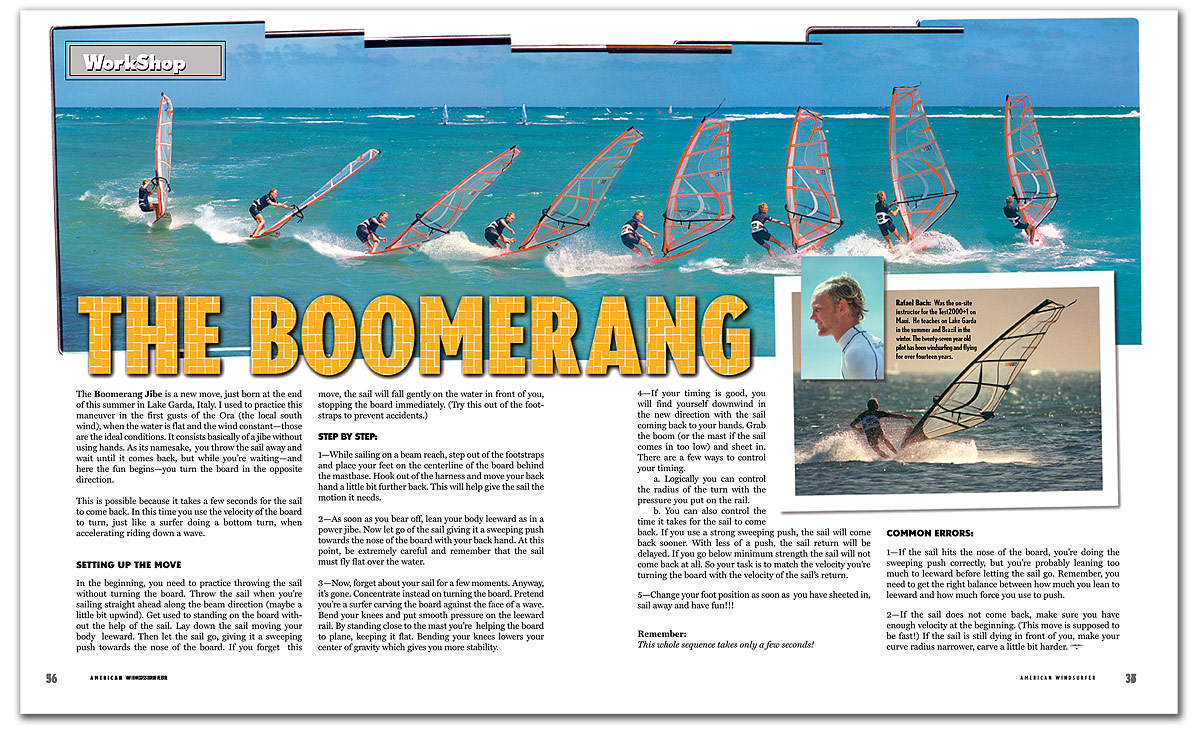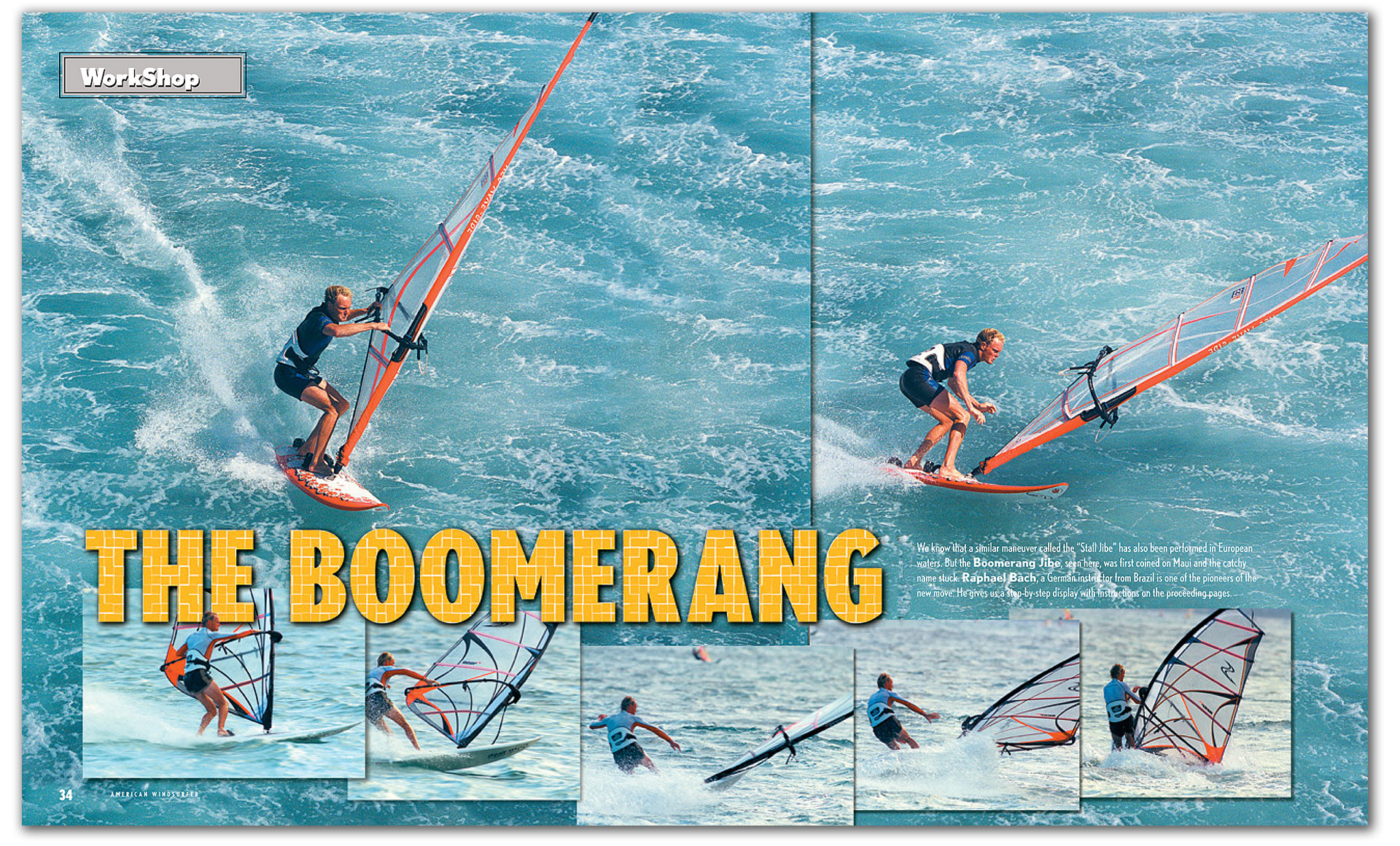We know that a similar maneuver called the “Stall Jibe” has also been performed in European waters. But the Boomerang Jibe, seen here, was first coined on Maui and the catchy name stuck. Raphael Bach, a German instructor from Brazil is one of the pioneers of the new move. He gives us a step-by-step display with instructions on the proceeding pages.
The Boomerang Jibe is a new move, just born at the end of this summer in Lake Garda, Italy. I used to practice this maneuver in the first gusts of the Ora (the local south wind), when the water is flat and the wind constant—those are the ideal conditions. It consists basically of a jibe without using hands. As its namesake, you throw the sail away and wait until it comes back, but while you’re waiting—and here the fun begins—you turn the board in the opposite direction.
This is possible because it takes a few seconds for the sail to come back. In this time you use the velocity of the board to turn, just like a surfer doing a bottom turn, when accelerating riding down a wave.
Advertisement
Setting up the move
In the beginning, you need to practice throwing the sail without turning the board. Throw the sail when you’re sailing straight ahead along the beam direction (maybe a little bit upwind). Get used to standing on the board without the help of the sail. Lay down the sail moving your body leeward. Then let the sail go, giving it a sweeping push towards the nose of the board. If you forget this move, the sail will fall gently on the water in front of you, stopping the board immediately. (Try this out of the footstraps to prevent accidents.)

Step by step:
1—While sailing on a beam reach, step out of the footstraps and place your feet on the centerline of the board behind the mastbase. Hook out of the harness and move your back hand a little bit further back. This will help give the sail the motion it needs.
2—As soon as you bear off, lean your body leeward as in a power jibe. Now let go of the sail giving it a sweeping push towards the nose of the board with your back hand. At this point, be extremely careful and remember that the sail must fly flat over the water.
3—Now, forget about your sail for a few moments. Anyway, it’s gone. Concentrate instead on turning the board. Pretend you’re a surfer carving the board against the face of a wave. Bend your knees and put smooth pressure on the leeward rail. By standing close to the mast you’re helping the board to plane, keeping it flat. Bending your knees lowers your center of gravity which gives you more stability.
4—If your timing is good, you will find yourself downwind in the new direction with the sail coming back to your hands. Grab the boom (or the mast if the sail comes in too low) and sheet in. There are a few ways to control your timing.
a. Logically you can control the radius of the turn with the pressure you put on the rail.
b. You can also control the time it takes for the sail to come back. If you use a strong sweeping push, the sail will come back sooner. With less of a push, the sail return will be delayed. If you go below minimum strength the sail will not come back at all. So your task is to match the velocity you’re turning the board with the velocity of the sail’s return.
5—Change your foot position as soon as you have sheeted in, sail away and have fun!!!
Remember:
This whole sequence takes only a few seconds!
Common errors:
1—If the sail hits the nose of the board, you’re doing the sweeping push correctly, but you’re probably leaning too much to leeward before letting the sail go. Remember, you need to get the right balance between how much you lean to leeward and how much force you use to push.
2—If the sail does not come back, make sure you have enough velocity at the beginning. (This move is supposed to be fast!) If the sail is still dying in front of you, make your curve radius narrower, carve a little bit harder.


